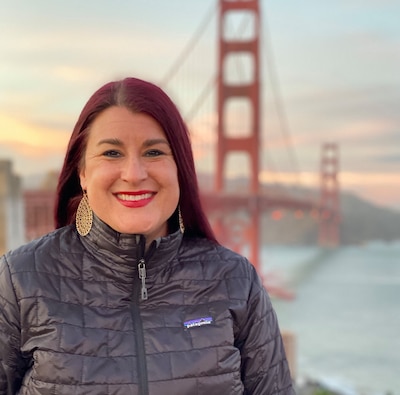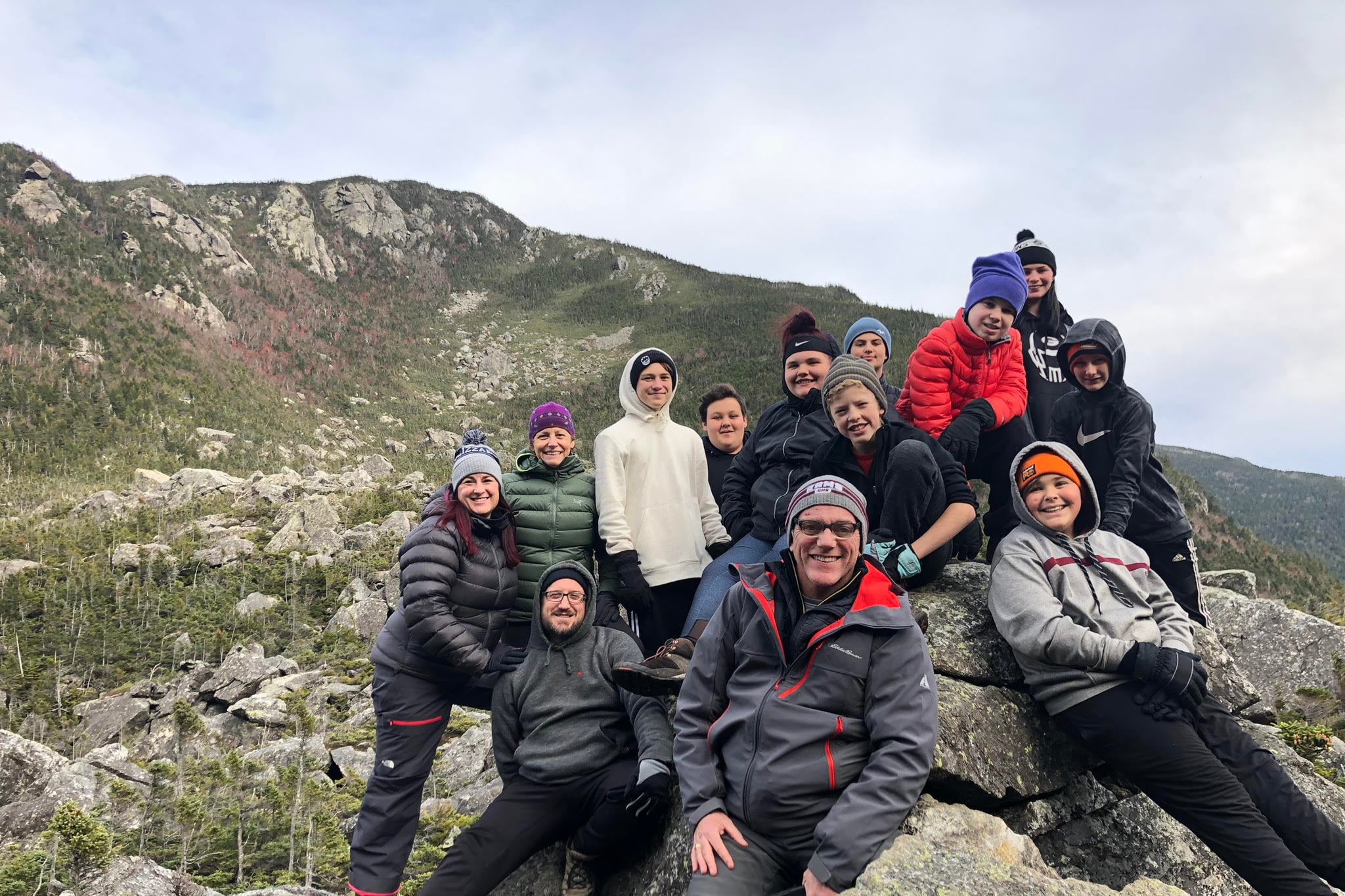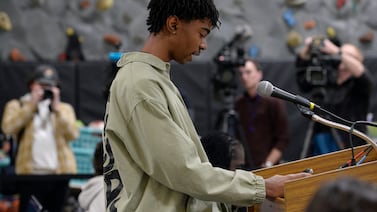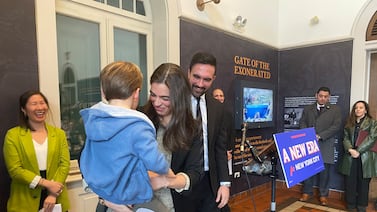Heather Whitaker’s classes are unconventional even in normal times.
Her seventh- and eighth-graders go hiking six times a year, in the process learning about environmental stewardship and how to read topographic maps. They go skiing and interview employees at a local ski resort about their career paths. And they manage a school garden, caring for the plants and then volunteering at the food pantry where the produce is donated.
The students are those who have otherwise struggled at Whitaker’s middle school in Gorham, Maine, a suburb of Portland.
“It’s my job to re-engage and motivate and take students who are not truly shining and allow them to show their true selves,” she said. “The hope is to hook them back into school before they get into high school and really disengage.”
Whitaker, Maine’s 2020 teacher of the year, is now working through a challenge facing educators nationwide: how to adapt her teaching for the coming school year, when she won’t be seeing her students in person every day.
Whitaker spoke recently with Chalkbeat about balancing outdoor education with algebra, using conversations with families to plan for the year ahead, and adjusting her own lessons in the wake of this summer’s Black Lives Matter protests.
This interview has been lightly edited for length and clarity.
Tell me a little bit about how your classes work in a normal year.
Alternative education is a program for students that are not accessing the traditional curriculum in the traditional classrooms. We read and we write and we do two-step algebraic equations. But it’s amazing how much you can learn by doing, and it doesn’t have to take place in four walls of the classroom.
We completely run and manage a school garden. It’s not small: We grow and donate over 1,000 pounds of produce per season to our local food pantry.
We also spend a lot of time in the Maine outdoors. We go on six hikes that progress from easier to more difficult. Our culminating trip is with the Appalachian Mountain Club in the White Mountains of New Hampshire. We’re in the woods, completely cut off from technology, for three days.

We also go to Sunday River, a big ski resort here. Students choose skiing or snowboarding, and they learn how taking healthy risks can be empowering and invigorating. It’s healthy adrenaline — healthy risk-taking to replace any negative risk-taking they may be experimenting with as teenagers.
I was on a chair lift a few years ago with a student, who was struggling with substance abuse, and he looked over at me and said, “Ms. Whitaker, this is the only time I don’t want to be high.” If I can give kids windows of opportunity, and windows into how things can be different in their life, then I’ve done my job.
What is your school’s plan? What challenges do you expect to face teaching this year?
I will have my students in person two days and be remotely teaching three days. I see, during days they’re with me, a mix of some skills with a lot of experiences. Then, when students are at home, they are carrying over what they learned the day before.
When we were fully remote, that was really hard for my students. It was so computer based. I know I really want to develop kits so kids at home can work on design challenges, hands-on projects.
I’m also going to build in office hours. I have an ed tech [elsewhere, a paraprofessional], and I can make sure he’s checking in with the kids who are at home. That’s not the truth for many educators across the country. I have so much compassion for educators who are going to be juggling that dual model. Your head and your heart wants to be with the students who are in front of you, but you’re also worried about your students who are at home.
During distance learning, many students may have fallen behind. How do you plan to help catch them up?
We need to meet them where they are and take them as far as we can. This notion that we’re going to cover as much as in normal years — we would be putting too much pressure on ourselves. We need to look at the critical standards, the critical knowledge and skills, and teach that after students are safe and well.
I have a 6 year old and a 10 year old. This past school year was my daughter’s kindergarten year. It was cut short. I know there are skills she didn’t get, and like a true teacher’s child, she doesn’t want to work with me. My child isn’t my student! I get caught up every so often in that fear. And we have to be so careful with that fear, because it leads to irrational thinking.
There’s been a lot of talk about the importance of social-emotional learning this coming school year. Will you be doing anything differently this year to account for what many families have been through?
This was a collective trauma. If students were not traumatized by what happened, there was stress. It is our responsibility when we get back to school as educators to acknowledge that.
I partner heavily with our social worker. We run skills groups in my class that help students with things like mindfulness, stress tolerance. That partnership I’m going to depend on more.
I’m really going to be making sure students are going home to a home where they have food. I’m on the board of directors for our food pantry. I started and run our backpack program, which identifies students throughout the district who need food to make it through the weekend.
I don’t have a full concrete plan yet of what I’m going to do, because I need to get to know my students. What platforms did their teachers from last year use? What worked? What didn’t work? I need to interview all of my parents. I started that today — I talked to a family for an hour on the phone.
That’s what I’ll need to do for all. Again, I have 15 students. And that’s where I have so much compassion for our high school teachers, who have 125 on their caseloads. Teachers need to have grace with themselves, and the community also needs to feel that same way.
Do you plan to talk with your classes about the antiracism protests that took place following the police killing of George Floyd? If so, how?
I need to make sure that all of my students in my class feel safe to come to school. I’m responsible for looking at my curriculum and making sure it’s culturally responsive and the work we’re doing is supportive of students of color.
For example, one of our monthly field trips is to a farm called Pineland Farms. At Pineland Farms, there is a cemetery with Black bodies exhumed from an island off the coast of Maine, Malaga Island. The bodies were exhumed and put on Pineland Farms because, at that time in Phippsburg, they wanted to put a hotel on the coast. They forced many people of color off the island or they institutionalized them at Pineland Farms, which was part of the eugenics movement. We go to Pineland Farms, but I never teach about Malaga Island. So I’ve dived in, to be able to infuse that into my social studies curriculum.
I’m really proud that Gorham has a Black Lives Matter group. They are working with students and families of color, and led by students of color, they are taking a hard look at our curriculum to make sure it is culturally responsive and really using their voice despite having some pushback from different members of the community.
Maine is one of the whitest states in the nation, and it is my responsibility to learn more and to do better and learn how I can do better.
What gives you hope in this moment?
Going remote changes things and makes it harder, but it’s not permanent. It’s not always going to be like this. That’s what I have to keep telling myself. Five years from now, it’s not going to be this way. That and my students’ passion.






